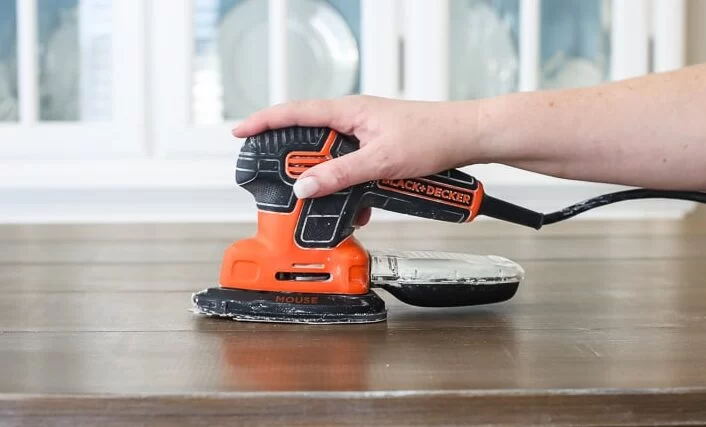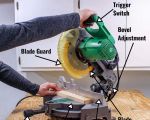
- Understanding Sanders for Rough Surfaces
- Types of Sanders for Smoothing Out Rough Surfaces
- Choosing the Best Sander for Your Project
- Top Sanders for Smoothing Out Rough Surfaces
- Tips for Using Sanders Effectively
- Why ToolNest is Your Go-To for Sanders
Understanding Sanders for Rough Surfaces
When it comes to working with rough surfaces, whether you're dealing with wood, metal, or plastic, having the right sander can make all the difference. Sanders are tools designed to smooth rough surfaces, remove paint, and prepare materials for finishing. The key to selecting the right sander lies in understanding how different types work and their best uses. A good sander will save you time and energy while ensuring a perfect finish.
Rough surfaces often require more than just elbow grease; they need the power and precision of an effective sander. Whether you're refinishing old furniture or preparing a woodworking project, knowing what to look for in a sander is crucial to getting the job done efficiently. In this article, we’ll explore the different types of sanders and provide expert recommendations to help you find the best tools for smoothing out rough surfaces.
Types of Sanders for Smoothing Out Rough Surfaces
There are several types of sanders, each designed for specific tasks. Below, we’ll cover the most common ones used for smoothing rough surfaces:
1. Orbital Sanders
Orbital sanders are among the most versatile tools for smoothing out rough surfaces. They feature a square or round sanding pad that moves in small, circular motions. This random motion helps prevent visible swirl marks, making orbital sanders ideal for fine finishes. They’re particularly effective for wood surfaces, removing paint, and prepping surfaces for staining.
2. Belt Sanders
Belt sanders are powerful tools with a continuous loop of sandpaper. They are especially effective for heavy-duty sanding tasks like smoothing rough wood, removing old finishes, or leveling uneven surfaces. Their aggressive sanding action makes them a go-to for larger areas and more demanding projects. However, belt sanders can leave marks on delicate surfaces, so they require a bit of expertise to use properly.
3. Random Orbital Sanders
Random orbital sanders combine the best features of both orbital and rotary sanders. They move in both circular and orbital patterns, which allows for quick material removal without leaving noticeable marks. This type of sander is perfect for DIY projects that require both power and finesse, such as sanding furniture or smoothing out rough flooring.
4. Detail Sanders
Detail sanders are designed for precise, intricate work. With smaller, triangular sanding pads, they can reach into corners and tight spaces where larger sanders can't. These sanders are great for finishing touches on small projects, like sanding trim, intricate woodworking, or removing paint from window sills.
Choosing the Best Sander for Your Project
Now that you know the different types of sanders, the next step is choosing the right one for your project. Here are a few things to consider when selecting a sander:
1. Project Size
If you’re working on a large project, such as sanding a large piece of furniture or an entire deck, a belt sander or orbital sander will be more effective. For smaller tasks or fine details, a random orbital or detail sander would be better suited.
2. Material Type
The type of material you’re working with also plays a crucial role in your choice of sander. Wood, metal, and drywall each require different sanding techniques and abrasives. For wood, orbital or random orbital sanders are ideal, while metal might need a belt sander for heavy-duty work.
3. Desired Finish
For a smoother finish, a random orbital sander is often the best choice, as it reduces the chance of leaving marks. If you’re going for a rougher or more textured look, a belt sander or orbital sander might be more appropriate.
Top Sanders for Smoothing Out Rough Surfaces
Here are some of the top-rated sanders for smoothing out rough surfaces:
1. DEWALT DWE6423K Variable Speed Orbital Sander
DEWALT’s DWE6423K is a powerful orbital sander known for its smooth performance and comfort. Its variable speed control allows for precise sanding, making it a top choice for woodworking projects. Its ergonomic design helps reduce vibration, making it comfortable to use for long periods.
2. Makita 9403 Belt Sander
The Makita 9403 is a heavy-duty belt sander that provides rapid material removal. It’s perfect for smoothing rough wooden surfaces, and its efficient dust collection system helps keep your workspace clean. This sander is ideal for larger sanding jobs that require substantial power.
3. Bosch ROS20VSC Random Orbital Sander
For those who need a sander that offers both power and finesse, the Bosch ROS20VSC is an excellent choice. Its smooth operation and low vibration make it easy to control, while the integrated dust collection system ensures a clean work environment. It’s a versatile sander suitable for various projects.
Tips for Using Sanders Effectively
To get the best results from your sander, follow these expert tips:
1. Choose the Right Sandpaper Grit
The grit of the sandpaper you use determines the level of smoothness. Coarser grits (40-60) are ideal for heavy material removal, while finer grits (120-220) are best for finishing touches.
2. Keep the Sander Moving
Always keep the sander moving to avoid uneven sanding. Focusing on one area for too long can lead to uneven surfaces or swirl marks.
3. Wear Safety Gear
Sanding generates a lot of dust, so make sure to wear safety glasses, a dust mask, and ear protection to protect your health.
Why ToolNest is Your Go-To for Sanders
When you’re ready to take on your next sanding project, ToolNest is your trusted resource for finding the best sanders for smoothing out rough surfaces. Our website offers a wide selection of high-quality sanding tools, from orbital to belt sanders, perfect for any job. At ToolNest, we ensure that you get the right tool for the job at competitive prices. Visit us to explore our range of sanding products and take the next step in achieving that perfect finish.









